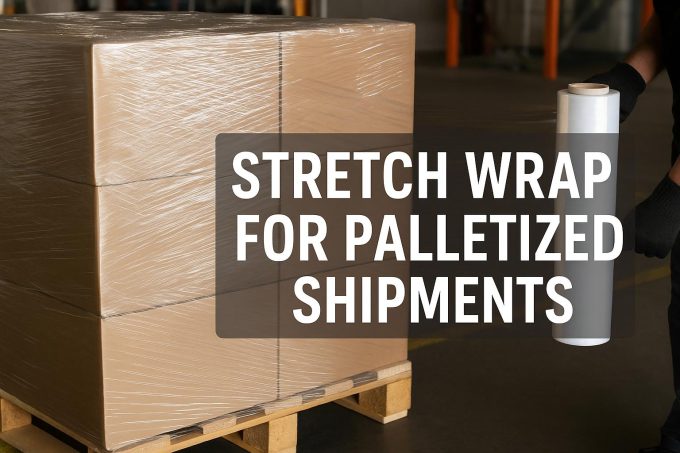Understanding Stretch Wrap for Palletized Shipments
Stretch wrap, also known as stretch film, is an indispensable material in the logistics and shipping industry. Its primary role is to secure products to pallets during transit and storage, ensuring safety and stability. The material is primarily made of linear low-density polyethylene (LLDPE), giving it excellent properties such as strength, flexibility, and the ability to adhere to diverse load shapes.
In modern logistics, stretch wrap plays a crucial role in maintaining the integrity of shipments throughout the supply chain. This document will delve deeper into the characteristics, types, benefits, and considerations for selecting the right stretch wrap for various shipments.
Key Characteristics of Stretch Wrap
Stretch wrap is a preferred choice for palletizing shipments because of its unique characteristics that offer efficiency and reliability:
Stretchability: One of the hallmark features of stretch wrap is its ability to elongate significantly beyond its original dimensions while remaining intact. This property is vital for securing items as it allows the film to be tightly wrapped around a load, providing exceptional holding force without the risk of tearing.
Cling: The inherent clinginess of stretch wrap is designed to make the film adhere to itself easily. This self-adhering property ensures that the wrapped items remain tightly bound, eliminating the need for additional adhesives or fasteners, which can add to both time and costs.
Durability: High-quality stretch wrap can resist various environmental conditions, including temperature swings and humidity. Its durability is crucial for maintaining its securing properties in different operational settings, whether indoors or outdoors.
Types of Stretch Wrap
Different types of stretch wrap cater to various applications, ranging from manual operations to highly automated processes. Each type is tailored to meet specific shipment requirements:
Hand Stretch Wrap: This type of wrap is ideal for manual wrapping tasks. It is designed to be user-friendly, reducing the effort needed to enfold the film around pallets manually. Hand stretch wrap is perfect for smaller operations or those with limited volumes where the use of sophisticated machinery may not be economically feasible.
Machine Stretch Wrap: In high-volume operations, machine stretch wrap becomes essential. It is used in conjunction with machines that automate the wrapping process, ensuring consistent film application, tension, and quality. This automation not only enhances productivity but also improves the uniformity and security of the load.
Pre-Stretch Wrap: As the name suggests, pre-stretch wrap is already stretched during its manufacturing process, reducing the force required during application. This type of wrap is beneficial in lowering film usage while maintaining strong load stability and is an excellent choice for businesses focusing on sustainability and cost reduction.
UV Stretch Wrap: This specialized stretch wrap is crafted to withstand ultraviolet rays from the sun, making it suitable for outdoor storage. UV stretch wrap prevents the degradation of both the film and the goods it covers, ensuring long-term protection against environmental elements.
Benefits of Using Stretch Wrap
Stretch wrap has firmly established itself as an essential component of modern logistics. Its benefits extend beyond basic load security, offering several advantages:
Load Stability: The primary advantage of using stretch wrap is the enhanced stability it provides. By tightly securing products, it minimizes the movement of goods during transport, which significantly reduces the chance of damage from shifting and impacts.
Cost-Efficiency: Economically, stretch wrap offers a cost-effective solution for load securing. It typically results in lower material costs compared to other methods of packaging, such as strapping or using rigid containers.
Protection: Beyond securing the physical placement of items, stretch wrap acts as a protective barrier. It shields goods from environmental hazards such as dust, moisture, and dirt, which can affect product quality during storage and transit.
Theft Deterrence: The nature of stretch wrap makes it difficult to tamper with without leaving visible evidence. Any attempts at theft are made apparent through cuts or damaged sections of the film, thus acting as a deterrent to pilferage during transportation.
Choosing the Right Stretch Wrap
Selecting the most appropriate type of stretch wrap involves a careful evaluation of several factors, including the nature of the load, method of application, and environmental conditions it will face. For optimal performance, businesses should consider working with packaging specialists or suppliers who can provide insights tailored to specific operational needs.
For companies aiming to enhance their supply chain efficiency, understanding and implementing the right type of stretch wrap is a strategic decision. By analyzing their specific requirements and consulting with experts, they can optimize their packaging operations for better performance and cost-effectiveness.
For further exploration into stretch wrap solutions, or to receive guidance on making the right selection, pursuing industry resources or consulting with manufacturers and suppliers can be valuable steps.

